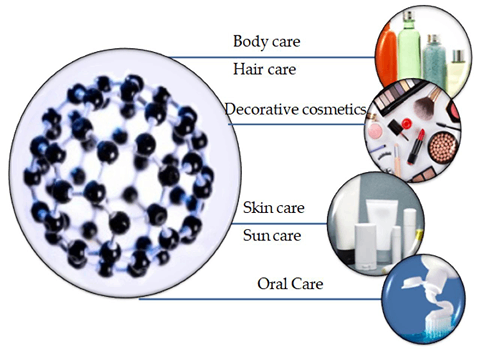In recent years, the beauty industry has witnessed a boom in the use of nanoparticles in cosmetics.
These minuscule particles, typically smaller than 100 nanometers, bring forth promising technological advancements.
However, as with any new development, there are also noteworthy disadvantages that need to be recognized and addressed.
In this article, we shed light on the potential downsides of nanoparticles in cosmetics.
Risks of Nanoparticles in Cosmetics
1. Skin Penetration
One of the potential drawbacks of nanoparticles in cosmetics lies in their ability to penetrate the skin.
Due to their extremely small size, these particles can easily be absorbed into the deeper layers of the skin, potentially raising concerns about their safety.
While some nanoparticles have been shown to be harmless, others could potentially have allergenic or toxic effects, especially when used in high concentrations or for prolonged periods of time.
2. Environmental Impact
The disposal of cosmetic products containing nanoparticles can also pose a risk to the environment.
When washed off the skin, these particles have the potential to enter wastewater treatment systems and subsequently contaminate water bodies. Once released into the environment, nanoparticles may negatively affect aquatic organisms and disrupt ecosystems.
The long-term consequences of such contamination are still being studied, but it is imperative to consider their potential impact on the environment.
3. Potential Toxicity
While nanoparticles in cosmetics are generally considered safe, concerns have been raised about their potential toxicity.
Some studies suggest that certain nanoparticles, such as titanium dioxide and zinc oxide, commonly used in sunscreens, may generate reactive oxygen species when exposed to sunlight, leading to cell damage and potential health risks.
However, more research is needed to determine the extent of these effects and establish safe usage guidelines.
4. Lack of Regulation
Another disadvantage is the absence of strict regulations specific to nanoparticles in cosmetics.
Many countries have yet to establish comprehensive guidelines for their use, leaving consumers largely unaware of the potential risks associated with these particles.
The lack of standardized testing protocols and labeling requirements makes it difficult for consumers to make informed choices regarding their cosmetic purchases.
5. Ethical Concerns
Additionally, the ethical implications of using nanoparticles in cosmetics should not be overlooked.
As with any cosmetic ingredient, the sourcing and production processes need to be carefully scrutinized to ensure that they align with ethical principles.
The mining and extraction of certain nanoparticles can be problematic in terms of environmental sustainability and human rights, making it vital for cosmetic companies to prioritize responsible sourcing and production methods.

Nanoparticles in Enhancing the Efficacy of Cosmetics
Nanoparticles in cosmetics undoubtedly offer numerous benefits, such as better product efficacy and enhanced texture.
However, understanding and addressing the potential risks associated with their use is equally important.
As an industry, we must continue to invest in scientific research, establish clear regulations, and adopt responsible practices to ensure the safe utilization of nanoparticles in cosmetics.
By doing so, we can strike a balance between innovation and consumer safety, ensuring a thriving and sustainable beauty industry for years to come.
In conclusion, while nanoparticles have shown great promise in cosmetic formulations, it is essential to acknowledge the potential disadvantages associated with their use.
From skin penetration and potential toxicity to environmental impact and ethical concerns, these drawbacks cannot be ignored.
To address these issues, it is crucial for cosmetic companies to invest in thorough research and testing.
Understanding the effects of different nanoparticles on human health and the environment is paramount.
Rigorous assessments should be conducted to determine the safe concentration levels and evaluate the long-term effects of nanoparticles on both consumers and the environment.
Nanoparticles on Skin Health
Furthermore, industry-wide regulations specific to nanoparticles in cosmetics are needed.
Governments and regulatory bodies must establish standardized testing protocols and enforce stricter labeling requirements.
This will enable consumers to make informed choices and have confidence in the safety of the cosmetic products they use.
In terms of ethical concerns, cosmetic companies must take responsibility for sourcing and production practices.
Implementing sustainable and ethical processes for acquiring nanoparticles is essential to minimize the negative impact on the environment and local communities.
Ultimately, it is crucial for the beauty industry to strike a balance between innovation and consumer safety.
By acknowledging the potential disadvantages of nanoparticles in cosmetics, investing in research, and implementing responsible practices, the industry can embrace the benefits of this technology while minimizing its potential risks.
Through transparency, education, and regulation, cosmetics can continue to evolve in a safe and sustainable manner.



